
By Jim Boyce | Based in the southern city of Nanning, Julien Boulard steadily became a force in China’s wine scene this past decade as head of Zhulian Wines, as a social media presence, and as a tutor and judge who travels across the country. Boulard, with credentials from WSET and the Court of Master Sommeliers, is also in the Master of Wine stream. And he just hosted a tasting of 1998 Bordeaux with wine writer Andrew Jefford. Grape Wall took that opportunity to ask him about the tasting, the wine scene in Nanning, and more.
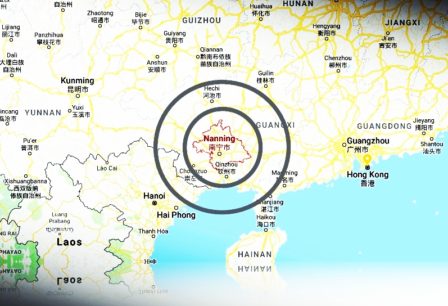
A lot of China wine talk focuses on cities like Shanghai, Beijing, Guangzhou and Shenzhen. What’s Nanning like?
Indeed, Nanning is one of these so-called “second-tierâ€, if not “third-tierâ€, cities with a population of “only†six million. It is a fast-growing city but far behind the metropolises you mentioned in terms of economic significance.
Still, located in the far south of the country, only two or three hours drive from the Vietnamese border, it is a place where life is peaceful, where people don’t seem to be constantly running like in Shanghai or Shenzhen. In short, a place where you can relax and really enjoy a bottle of wine with friends. They won’t be stuck in traffic for two hours before joining you, either!
What do people tend to drink?
Being a relatively hot place, people tend to drink quite a lot of beer in Nanning. Some people drink baijiu, too, but it doesn’t seem as important as in the northern provinces. Wine is mainly consumed by middle-class Generation Xers and Millennials, especially those with a strong interest in Western culture.
How easy is it to get good wine?
I’ve always been surprised at how many wine shops there are in Nanning. Hundreds of them! However, their selection is rarely exciting, mainly entry-level, bulk stuff or big names such as the ubiquitous Penfolds. The advanced wine lovers thus tend to buy their wines on-line or directly from importers located in Shanghai or Guangzhou.
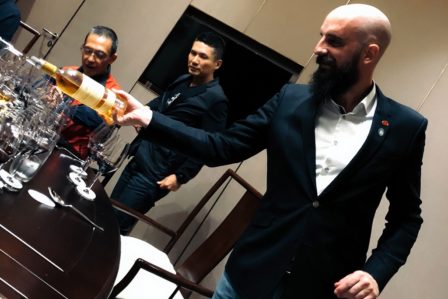
You recently teamed up with Andrew Jefford for a 1998 Bordeaux wine dinner. How did that come about?
I chose this vintage because I found that wine lovers in China don’t have many opportunities to taste the best Bordeaux wines side by side and at their organoleptic apogee. Most professionals go to the UGCB [Union des Grands Crus de Bordeaux] annual roadshow across China’s main cities, but they only can compare wines which are three years old.
I thus thought that organising a twenty years retrospective focusing on the best of the best from Bordeaux could be interesting and exciting. Moreover, France won its first football World Cup in 1998 and the second one in 2018! What a great way to celebrate! But more seriously, I’m thinking of organising this 20-year retrospective annually, starting with a 1999 vintage tasting next year.
What typifies that vintage? How did you pick the order?
1998 was a great vintage in Bordeaux, even considered outstanding on the Right Bank. And the great thing about such a tasting is that it makes you realize how this kind of broad statement can be prejudicial for the sub-regions deemed “inferior”!
Although it is true that the five wines from the Right Bank—Ausone, Cheval Blanc, Angélus, Pavie and Pétrus—showed more consistency across the flight, Lafite-Rothschild and Haut-Brion were among my top four, if not top three, and most participants agreed on that. 1998 was just a great vintage across the region!
Regarding the order, considering wines from the Right Bank were supposed to be the highlight of the evening, and also because they tend to be richer than those from the western part, we decided to start with the Left Bank, going north to south. This allowed us to compare side-by-side the three wineries from Pauillac—Mouton, Lafite and Latour—and then look for the stylistic differences with Margaux and Haut-Brion.
We then went to the Right Bank with the two new 1er Crus Classés “Aâ€, Angélus and Pavie, the two historical first growths, Ausone and Cheval Blanc, and then Pétrus, which is often the most powerful of all. And, of course, we finished with a magnificent Yquem 1998.
How did people react?
Participants really loved it! Especially that there were only ten of them at each tasting! Together with Andrew and myself, that was twelve people, allowing us not to only “taste†the wines, but really to “drink†and enjoy them!
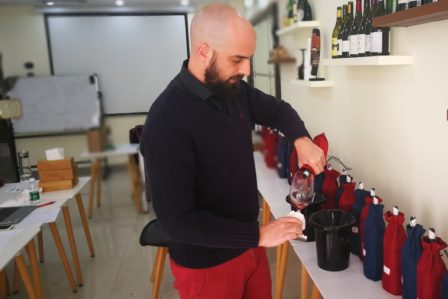
You’ve met lots of new wine consumers over the years. Many trade people think the Cabernet-heavy strategy of China’s producers isn’t the best match for consumers at large. Do you agree? Why or why not?
Well, I tend to think that consumers do like Cabernet Sauvignon, at least the name or idea of it, and thus it helps to sell the wines. Therefore, from a market perspective, there’s nothing wrong with it.
However, I do think that China would produce better wines if producers wouldn’t solely, or mainly, focus on Cabernet. For instance, Marselan shows very promising results in many regions, and I’ve had some very nice Syrah.
I’m not convinced that Cabernet Sauvignon is the best choice for most wine-producing regions in China. Wineries and local governments want to reproduce Bordeaux’s success story, I understand that, but they neglect the fact that the success of Bordeaux isn’t built on Cabernet Sauvignon, but on the symbiosis between Cabernet Sauvignon and the terroir of Bordeaux! More experiments should be conducted to find the ideal match between grape varieties and their terroir.
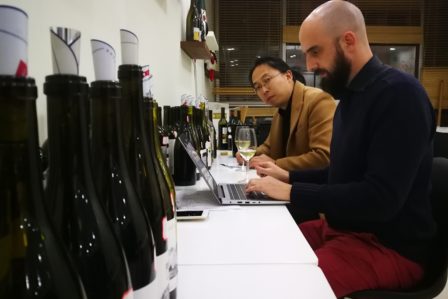
We are seeing lots of economic growth beyond the so-called “first tier” cities. What kind of opportunities are there for wine in a city like Nanning? If someone wants to enter that market, what do they need to do?
Indeed, China isn’t only about Shanghai, Beijing, Guangzhou and Shenzhen! Greater Nanning might seem substantial with 6.5 million inhabitants, but it is only about the fiftieth biggest city in China.
It’s easy to understand that while wine consumers only represent a very small proportion, the absolute numbers suggest even a “small percentage†could mean a “huge marketâ€. Still, I don’t think the biggest market has been unearthed yet: only a fraction of the people who have the financial means to buy wine actually consume it. Most of them feel intimidated by wine.
I remember a family dinner for Chinese New Year. Someone asked what should we drink with the food? I offered to drink wine. But the same person responded: “Wine? That’s too complicated! What about some beer?”
On that particular day, I realized how frightening wine could be for the Chinese middle class. It’s sometimes a matter of money or taste, but I think the images associated with wine are also a big issue. Just ask people what scene they associate with a bottle of wine? Then ask them to do the same exercise with a bottle of beer. I guess the second scene would be much more convivial!
The market of “actual wine drinkers†is almost saturated, thus if someone wants to enter a market like Nanning, he or she should be prepared to work on unearthing the “potential wine drinkersâ€. This involves being based on the spot and investing a lot on brand promotion, especially via tastings. Of course, you can still find a strong local distributor and then visit to host a tasting or two every year. But unless you’re Penfolds or Lafite, I’m afraid you won’t sell hundreds of cases.
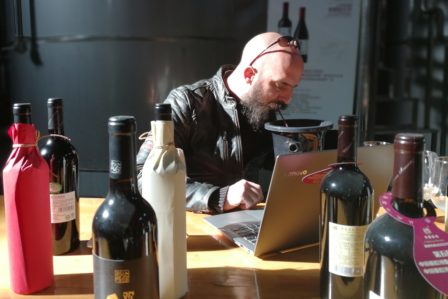
Grape Wall has no sponsors of advertisers: if you find the content and projects like World Marselan Day worthwhile, please help cover the costs via PayPal, WeChat or Alipay.
Sign up for the free Grape Wall newsletter here. Follow Grape Wall on LinkedIn, Instagram, Facebook and Twitter. And contact Grape Wall via grapewallofchina (at) gmail.com.

Leave a Reply
You must be logged in to post a comment.